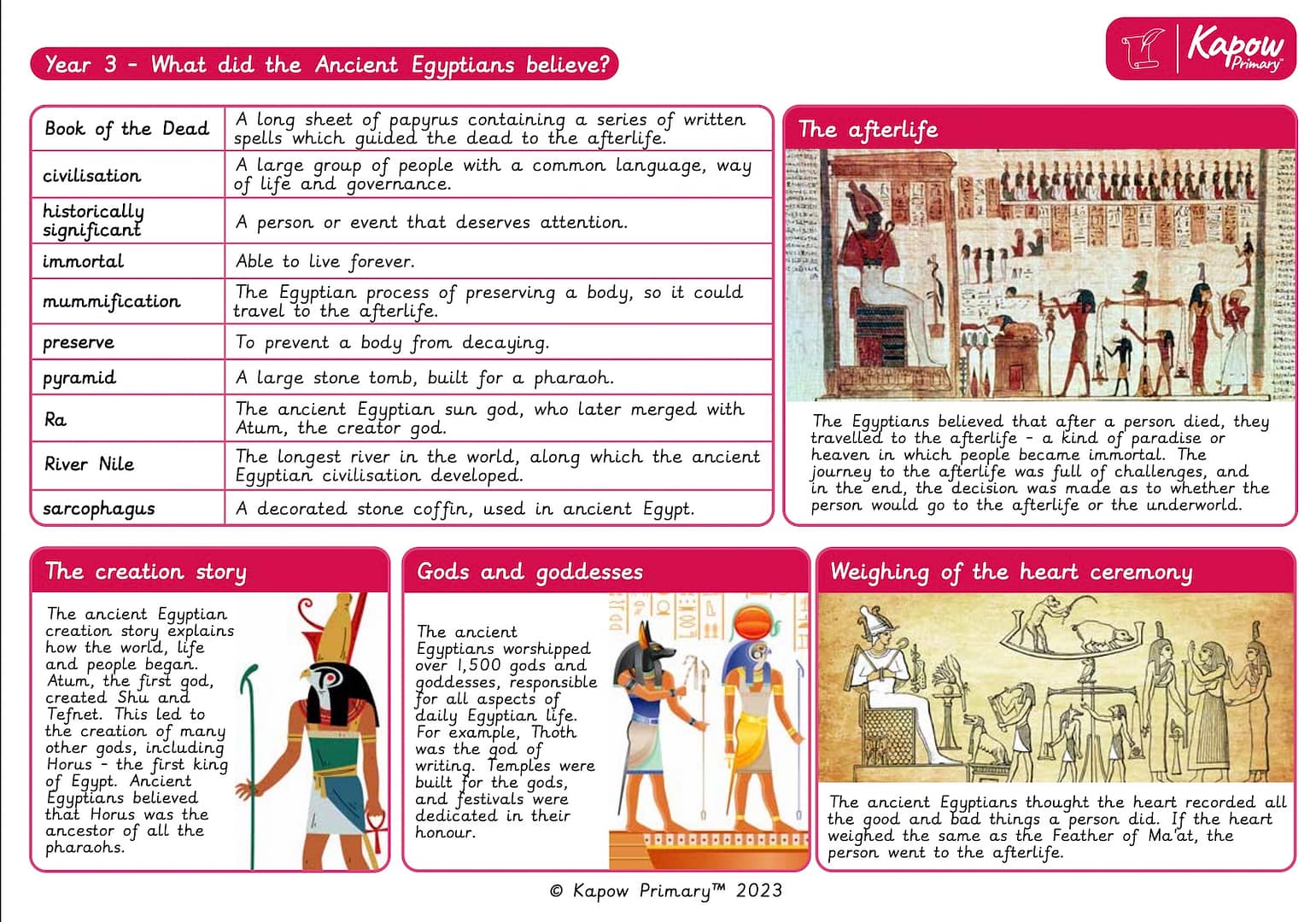
A Knowledge organiser that captures the essential knowledge and skills learnt throughout the unit Archived Unit – History, What did the ancient Egyptians believe?
This resource is designed to support pupils as they investigate the beliefs and rituals of ancient Egyptian civilisation. It introduces key concepts such as mummification, the journey to the afterlife, and the symbolic “Weighing of the heart” ceremony. The unit highlights significant religious figures and practices, the importance of gods and goddesses, and vocabulary such as “Ra”, “Book of the Dead”, and “sarcophagus”. A timeline spanning over three millennia offers historical context, helping pupils understand the development of one of the world’s earliest civilisations. This unit is ideal for developing historical awareness and cultural literacy.
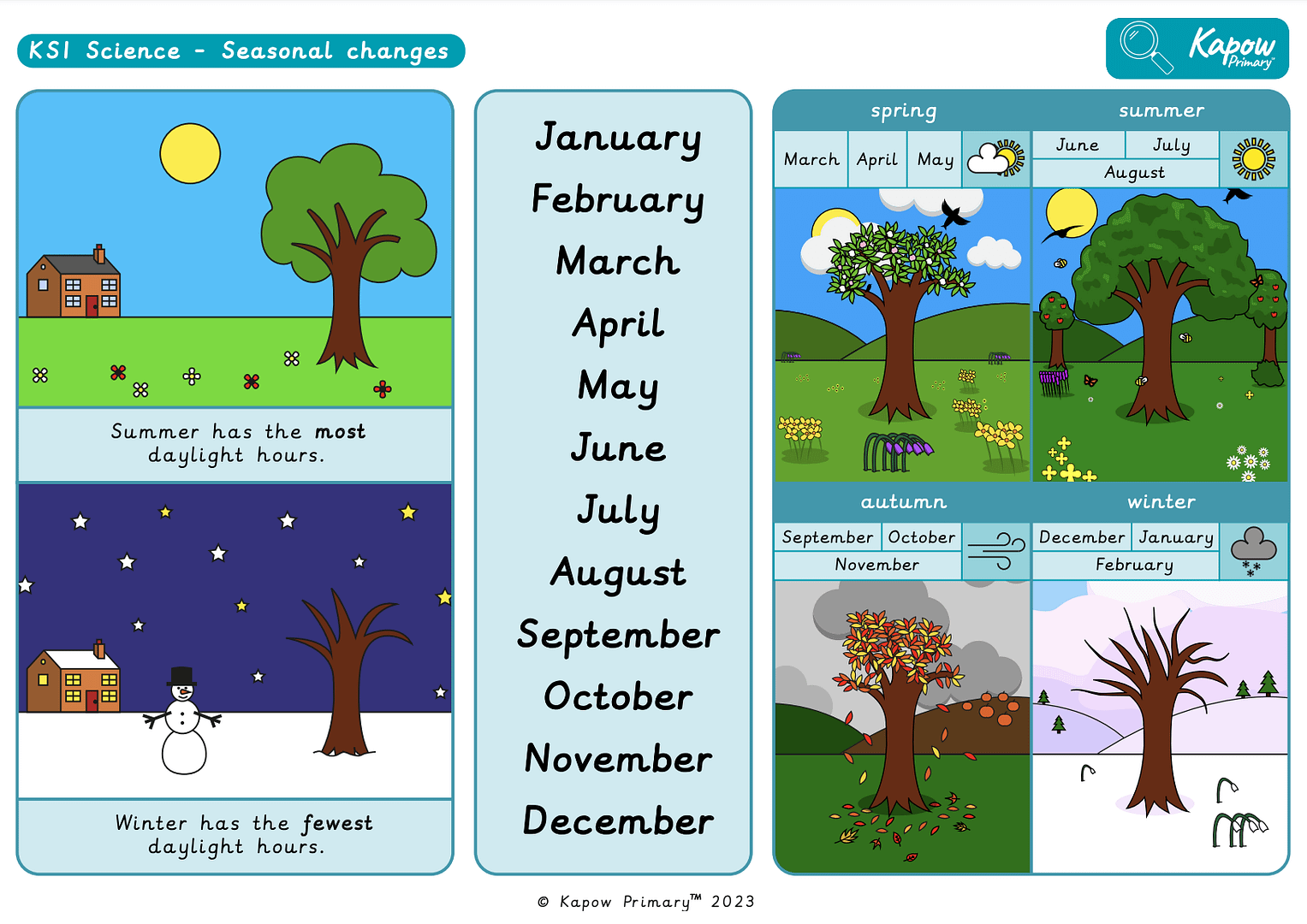
A Knowledge organiser that captures the essential knowledge and skills learnt throughout the mixed-age unit Science, Year 1, Forces and space: Seasonal changes.
This resource is designed to support the children as they explore seasonal changes throughout the year. It highlights key vocabulary and concepts, including the four seasons (spring, summer, autumn, and winter) and how daylight hours vary across them. The resource helps the children understand the sequence of months and how weather and natural environments change with the seasons. It is perfect for consolidating essential knowledge and fostering an early understanding of time, weather patterns and seasonal cycles.
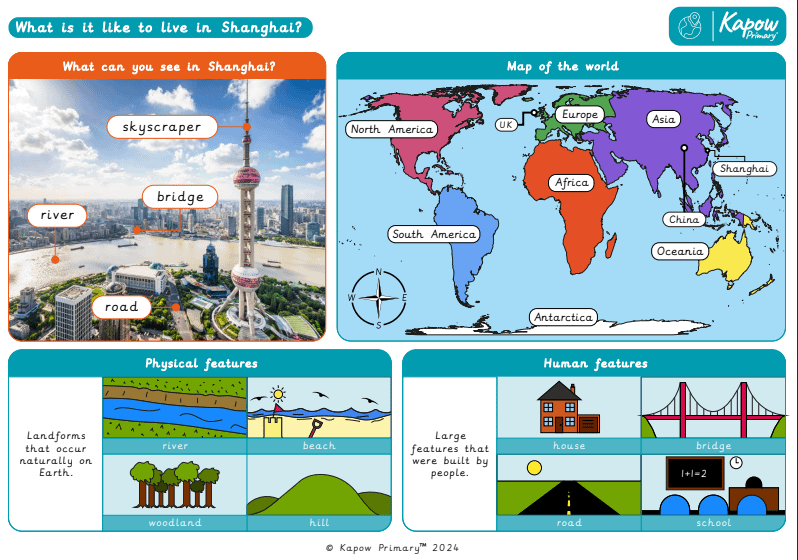
A Knowledge Organiser that captures the essential knowledge and skills learnt throughout the unit Geography, Year 1, What is it like to live in Shanghai?
This resource is designed to support pupils as they compare geographical features of Shanghai with those in the UK. It introduces the concepts of physical features—such as rivers, hills, woodlands, and beaches—and human features like skyscrapers, roads, bridges, houses, and schools. Through a labelled photograph of Shanghai and a colourful world map, pupils are helped to locate continents and identify China’s global position. This unit is ideal for building early geographical awareness and developing pupils’ ability to distinguish between natural and human environments.
A Knowledge Organiser that captures the essential knowledge and skills learnt throughout the unit Archived – History, Year 4, Were the Vikings raiders, traders or settlers?
This resource is designed to support pupils in evaluating the different roles the Vikings played in Britain—exploring evidence of their activity as fierce raiders, enterprising traders, and long-term settlers. It introduces key vocabulary including Danelaw, longboat, bias, and perspective, while outlining historical events from AD 793 to AD 1042 on a detailed timeline. Pupils examine the impact of Viking raids on places like Lindisfarne, the establishment of Viking settlements in northern and eastern England, and the political agreements that shaped Anglo-Saxon and Viking territories. The unit encourages balanced historical thinking by challenging pupils to consider multiple viewpoints about the Viking legacy.
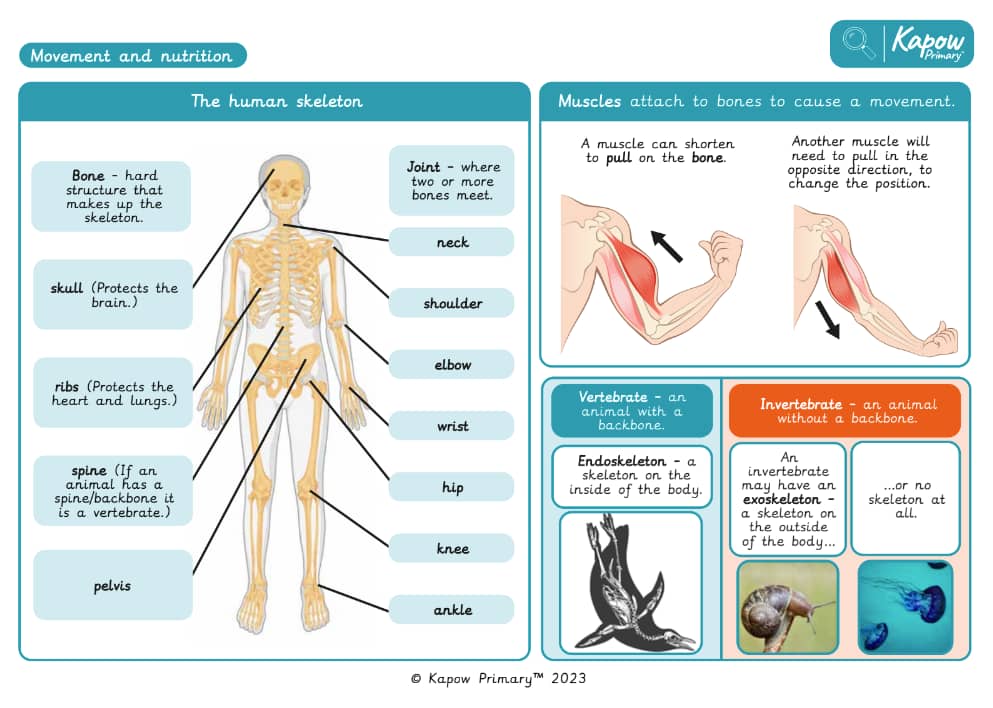
A Knowledge organiser that captures the essential knowledge and skills learnt throughout the unit Science, Year 3, Animals, including humans: Movement and nutrition.
This resource is designed to support the children as they explore movement and nutrition. It highlights key vocabulary and concepts, including the human skeleton, joints, muscles and how they work together to enable movement. The resource also introduces vertebrates and invertebrates and explains the role of endoskeletons and exoskeletons. The children will learn about the seven essential nutrient groups needed for survival and the importance of a balanced diet. It is perfect for consolidating essential knowledge and fostering an understanding of how our bodies move and stay healthy.
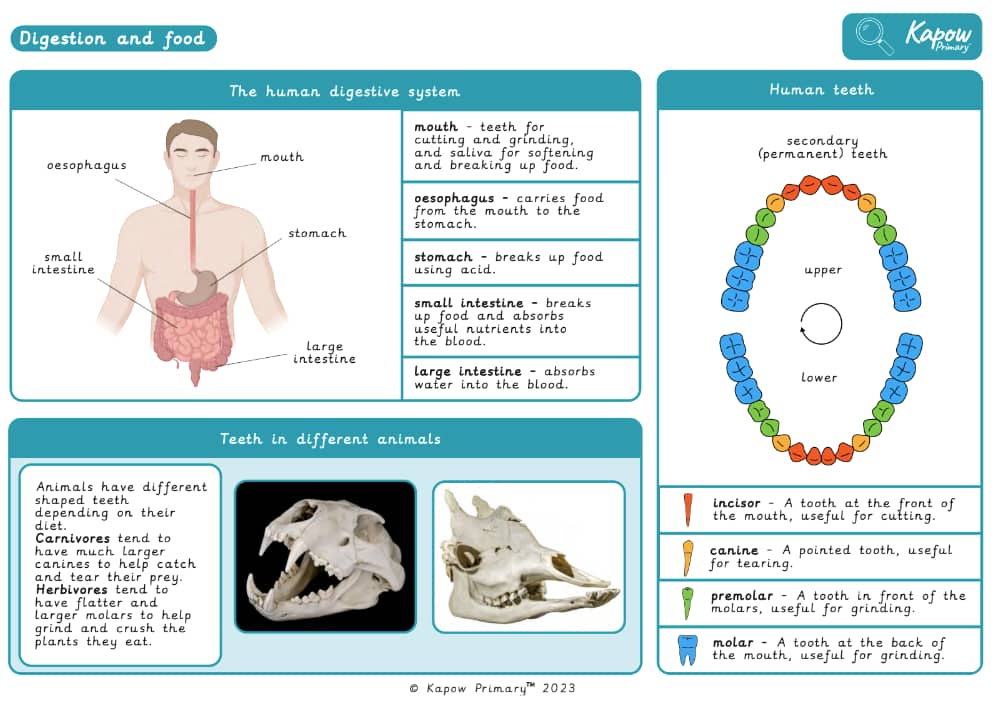
A Knowledge organiser that captures the essential knowledge and skills learnt throughout the unit Science, Year 4, Animals, including humans: Digestion and food.
This resource is designed to support children as they explore digestion and food. It highlights key vocabulary and concepts, including the human digestive system, the role of different types of teeth and how food is broken down and absorbed. The resource also examines how animals’ teeth are adapted to their diets and introduces food chains, showing how energy is transferred between living things. It is perfect for consolidating essential knowledge and fostering an understanding of how digestion, teeth and food chains are connected in the natural world.
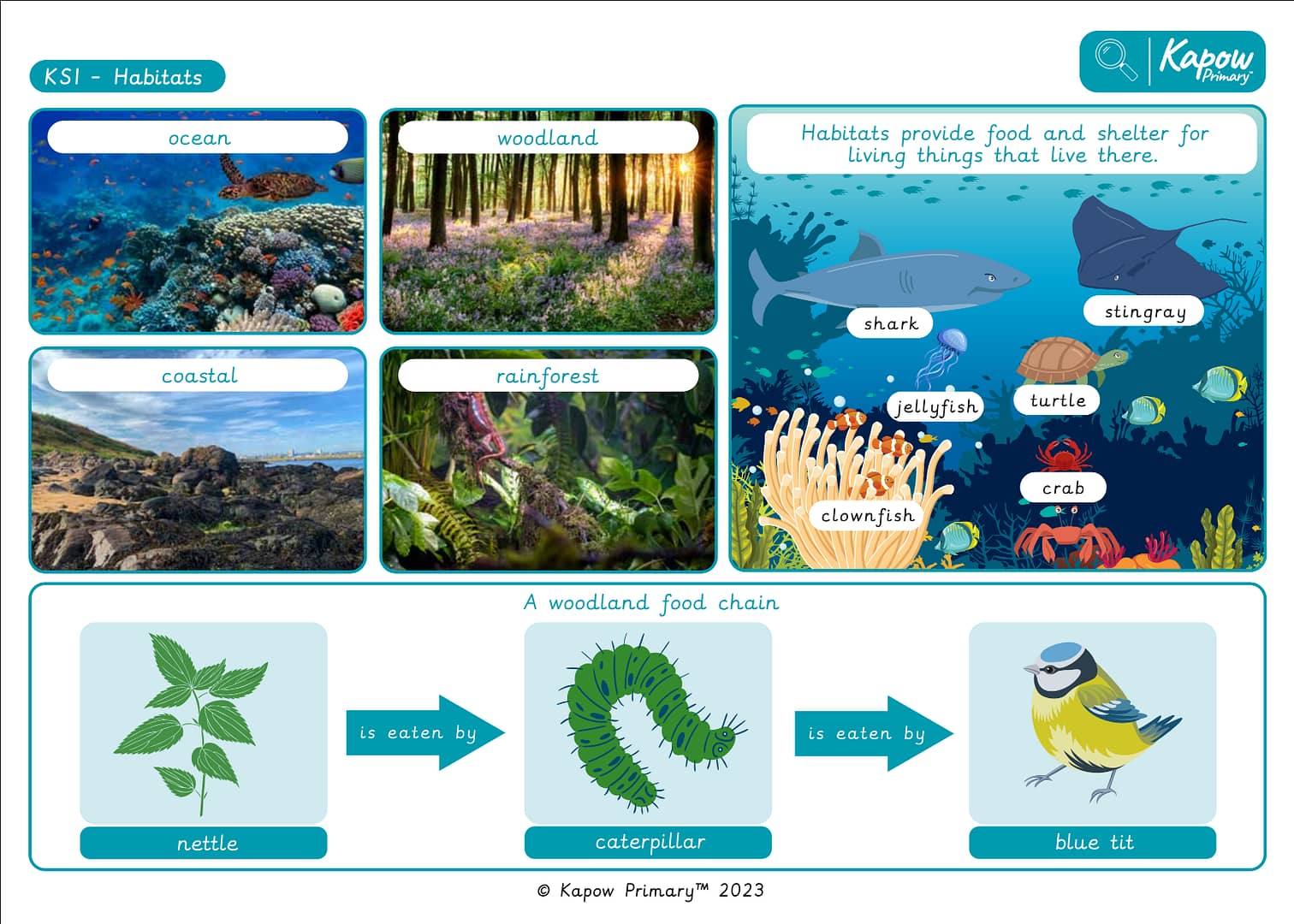
A Knowledge organiser that captures the essential knowledge and skills learnt throughout the unit Science, Year 2, Living things: Habitats.
This resource is designed to support the children as they explore different habitats. It highlights key vocabulary and concepts, including how habitats such as oceans, coastal areas, woodlands and rainforests provide food and shelter for living things. The resource introduces simple food chains to show how animals depend on one another for survival. It is perfect for consolidating essential knowledge and fostering an understanding of the relationships between plants, animals and their environments.
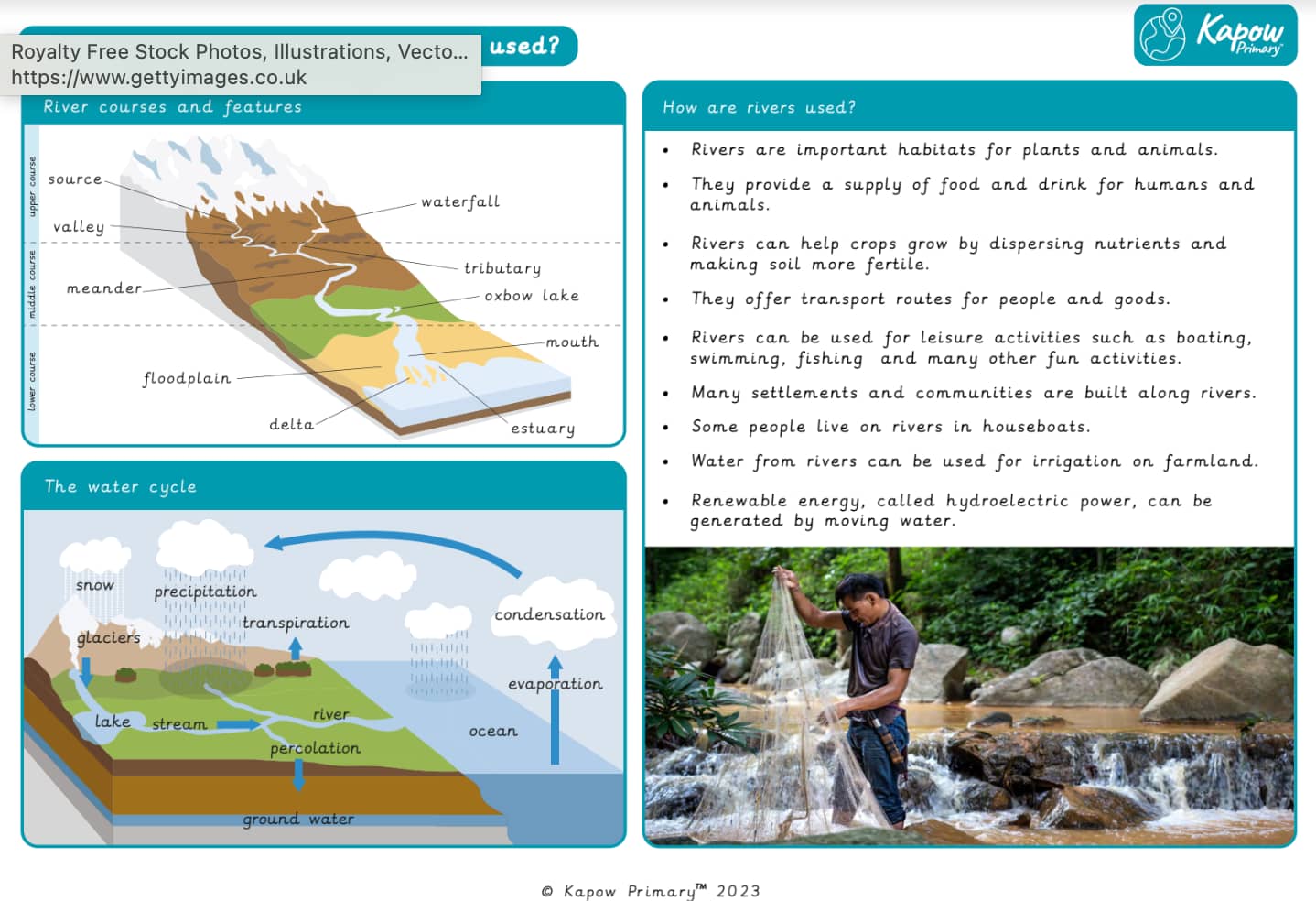
A Knowledge Organiser that captures the essential knowledge and skills learnt throughout the unit Geography, Year 4, What are rivers and how are they used?
This resource is designed to support pupils as they explore the physical features of rivers, the stages of a river’s course, and their practical and environmental importance. Through clear diagrams and definitions, pupils learn about river features such as source, tributary, meander, delta, and estuary, and how these connect with the water cycle. The organiser also outlines how rivers support human and animal life—providing food, transport, irrigation, and renewable energy—while also serving as habitats and recreational spaces. It is ideal for deepening pupils’ geographical vocabulary and understanding of natural systems.
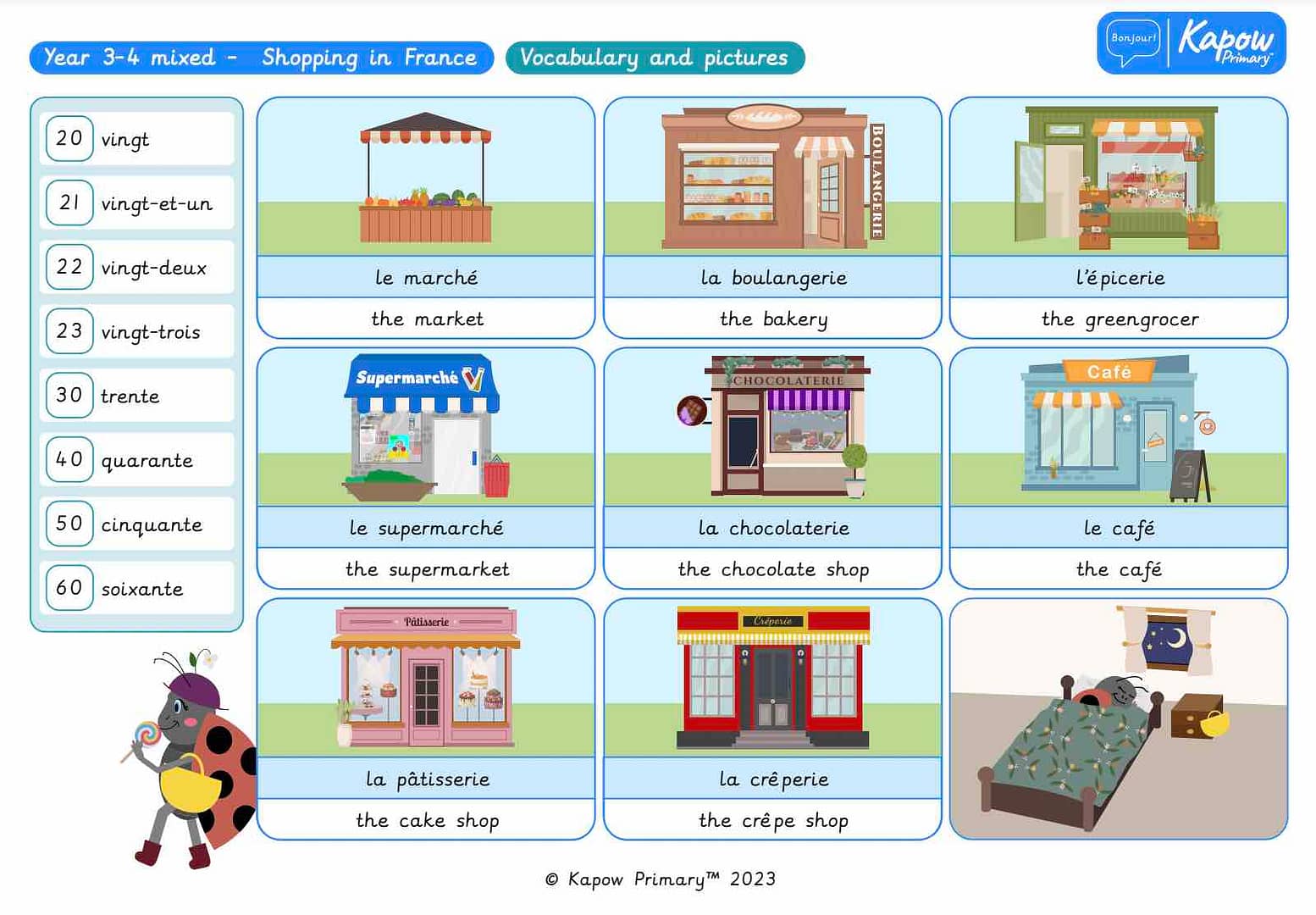
A Knowledge Organiser that captures the essential knowledge and skills learnt throughout the unit French, Year 3/4 (A), Shopping for French food.
This resource is designed to support pupils as they explore key vocabulary and sentence structures related to shopping experiences in French. It introduces names of common shops (e.g. la boulangerie, le marché, la crêperie), numbers from 20 to 60, and grammatical rules for using “to the”, “a/an”, and “it/them” in French. Example sentences such as “J’achète une pomme et je la mange” help pupils apply vocabulary in real-world contexts. Ideal for reinforcing pronunciation, grammar and vocabulary in an engaging and culturally relevant setting.








